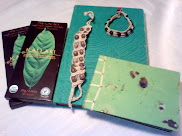Some of you might have heard I was working on a book. The Story of Life is a bilingual, evolutionary creation story, written in an oral storytelling style. A fuller introduction is available on the website: http://sunrisebegins.blogspot.
The book is currently self published on Lulu (click here to see it) . You can check out a free pdf of the full text or get the paperback for $15. Either way, be sure to let me know what you think of it!
As part of the release of The Story of Life, I'm also announcing a sort of art contest. If you're inspired to paint, draw, doodle or even photograph something after reading, send it to me and we'll start compiling a collection that will eventually become an illustrated series. There's more info on that on the website as well.
Read it slowly - the world didn't create itself in a week.
Andon Olea Zebal
------------------------------
Hola gentes,
Acabo de terminar un proyecto que nos ha tomado 4 billones de años. El Cuento de la Vida es una obra sobre nuestros orígenes
El libro esta auto-publicado en Lulu (picale aqui para verlo). Puedes ver la historia completa gratis en un formato digital o obtener el libro por $15 (no estoy seguro si el systema funcione en Mexico).
Con el estreno del libro tambien annuncio un concursito de arte. Si El Cuento te anima a dibujar, pintar, o hacer una obra en cualquier medio visual, mandamela y empezaremos una collecion que terminara en una serie ilustrada de El Cuento de la Vida. Hay mas informacion sobre ello en el sitio de web.
Leelo lentamente - el mundo no se creo en una semana.
Andon Miguel Zebal Olea




